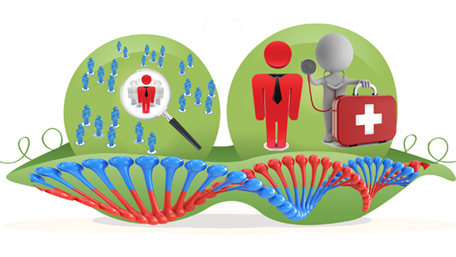
04/04/2020
Hot Topics of the Day are picked by experts to capture the latest information and publications on public health genomics and precision health for various diseases and health topics. Sources include published scientific literature, reviews, blogs and popular press articles.
Sign up MyPHGKB to receive the daily hot topic email alert.
Archived Hot Topics of the Day By Date
Addressing Social Determinants of Health- Time for a Polysocial Risk Score
JF Figueroa et al, JAMA, April 3, 2020
The Dilemma of Coronavirus Disease 2019, Aging, and Cardiovascular Disease-Insights From Cardiovascular Aging Science
JAMA Cardiology, April 3, 2020
Interleukin-6 in COVID-19: A Systematic Review and Meta-Analysis
EA Coomes et al, MEDRXIV, April 3, 2020
Using ILI surveillance to estimate state-specific case detection rates and forecast SARS-CoV-2 spread in the United States
JD Silverman et al, MEDRXIV, April 3, 2020
Could wearables like Apple Watch, Fitbit fitness trackers help detect coronavirus
USA Today, April 3, 2020
How sewage could reveal true scale of coronavirus outbreak-Wastewater testing could also be used as an early-warning sign if the virus returns.
Nature News, April 3, 2020
The Coronavirus Patients Betrayed by Their Own Immune Systems
New York Times, April 1, 2020
Google taps vast trove of location data to aid global effort to combat coronavirus
Washington Post, April 3, 2020
Contribution of macronutrients to obesity: implications for precision nutrition
Nat Rev Endrocrinology, March 31, 2020
Disclaimer: Articles listed in Hot Topics of the Day are selected by Public Health Genomics Branch to provide current awareness of the scientific literature and news. Inclusion in the update does not necessarily represent the views of the Centers for Disease Control and Prevention nor does it imply endorsement of the article's methods or findings. CDC and DHHS assume no responsibility for the factual accuracy of the items presented. The selection, omission, or content of items does not imply any endorsement or other position taken by CDC or DHHS. Opinion, findings and conclusions expressed by the original authors of items included in the Clips, or persons quoted therein, are strictly their own and are in no way meant to represent the opinion or views of CDC or DHHS. References to publications, news sources, and non-CDC Websites are provided solely for informational purposes and do not imply endorsement by CDC or DHHS.
- Page last reviewed:Feb 1, 2024
- Page last updated:May 18, 2024
- Content source:




